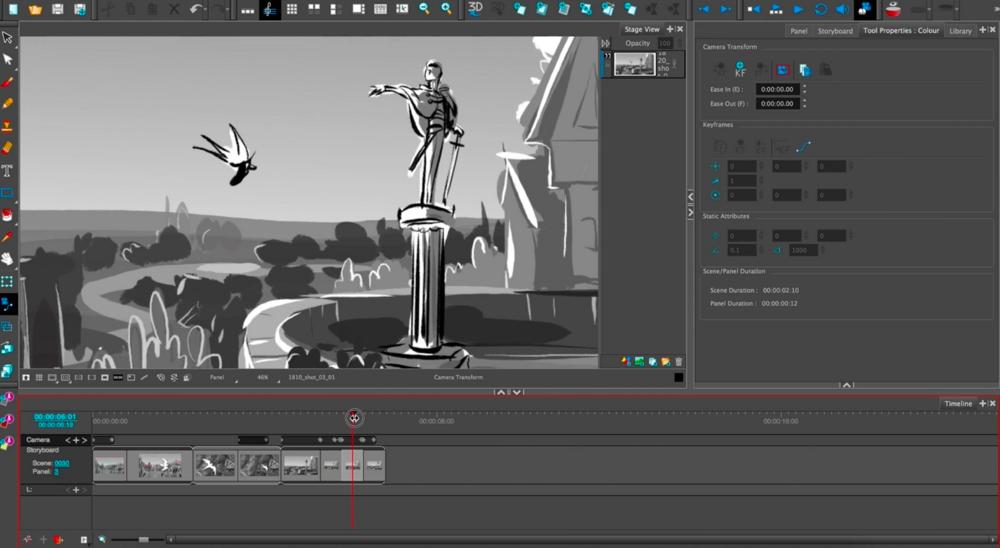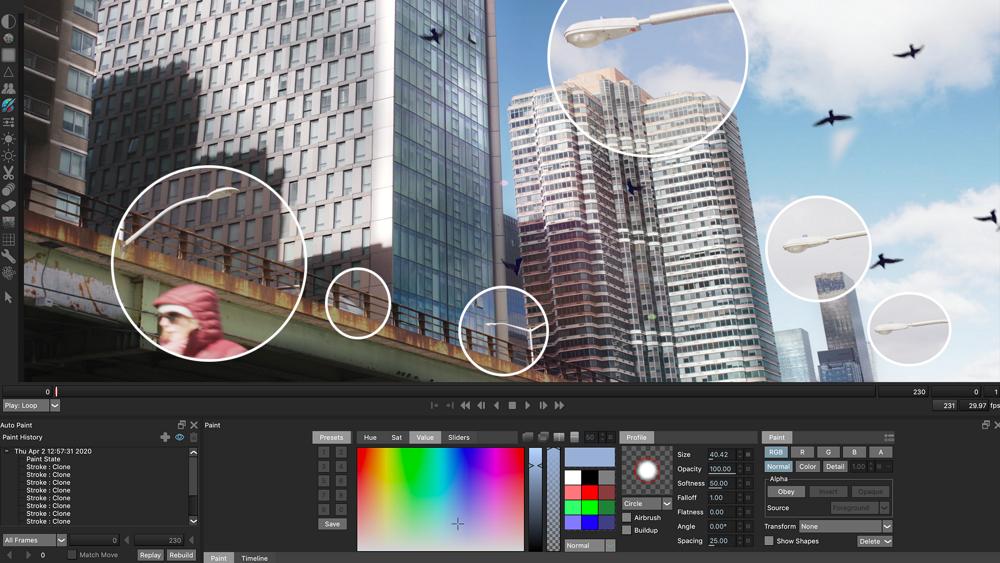Sept. Tech Assessments: Razer Blade 15 Studio Version, Foundry Flix 6.3 & Silhouette Paint for Nuke
7 min readRazer Blade 15 Studio Edition
Of all of the more recent laptop/mobile workstations that have recently appear out with the most current RTX card, the Razer Blade 15 Studio Edition is the latest and visually the sexiest, in my impression. The new model has an anodized end on leading of a human body milled from a block of aluminum (which I discovered a tiny sharp on the edge) and an illuminated colour keyboard which could be just glitzy glamor, but I found it functional to map certain shades to keys, related to the Avid keyboards of very long ago (I’m sure they are still around).
But to move outside of the slick exterior: The very first asset is the 4K contact exhibit that extends to almost the edge with a minimum bezel, with a 100% DCi-P3 shade gamut — which is the regular that the American movie field has established for motion picture projectors. This suggests that you can be moderately certain that what you see is what need to be coming out when it’s projected. And for a notebook like this, that is extremely critical. Due to the fact, although the Razer Blade Studio Version operates the latest edition of GTA incredibly very well, that is not what it is created for. It’s developed to be a workhorse for creativity. Considering the fact that this is an animation-centric publication, and I’m an animator, I’m likely to say it was intended for us (even though that assuredly is only partially true).
To even more establish my position, the display screen and acceleration is driven by a Quadro RTX 5000 with Max-Q (this means it is created to healthy inside a quite slim profile). The technique I’m examining has a display screen card with 16GB of RAM, which is pretty robust. The RTX sequence of Nvidia playing cards is specially intended for ray-tracing acceleration. Any application making use of the GPU has by now been updated to employ this technologies to pace up calculations. And for our reasons, this weighs greatly in 3D rendering from GPU accelerated renderers like V-Ray, Arnold, Redshift, RenderMan — you name it. But it also is critical for genuine-time rendering in matters like Unreal Motor. And with actual-time technological innovation leaping into lightspeed immediately after the achievement of The Mandalorian, this kind of technologies is no for a longer time simply an alternative — it’s a necessity. So, if you have that in your 15” Razer Blade … I’ll enable you fill in the summary.
But, I digress! The Razer Blade has a great deal of energy packed inside of it, which usually means that it generates a whole lot of heat. The designers have mitigated that by making use of a copper vapor chamber that vaporizes deionized h2o and transfers the warmth absent from the components (a.k.a. science issues), by way of its dual fans and out the base. Good for the hardware, bad for your legs.
The souped-up model I was reviewing comes in at practically $5K with the RTX, 32GB of RAM and a 1TB SSD, which is a wholesome financial investment. But if you are on established furnishing serious-time rendering for administrators to look at, it might just be well worth it.
Site: Razer.com
Rate: Begins at $4,299.99

Flix
Foundry’s Flix 6.3
Flix is Foundry’s on-line storyboard and animatic instrument geared toward story advancement and pre-manufacturing on film, Tv, gaming and animation jobs — or regardless of what medium transpires to be invented in the upcoming. Tale is tale, correct? But how is it distinct from, say, drawing storyboards and cutting them collectively in something like Avid, Premiere or Toon Boom’s StoryboardPro?
The answer is that Flix functions as a central collaboration hub concerning workforce members and software package. The essential becoming collaboration — and, more critically in these pandemic situations, distant collaboration. Flix is effectively situated in the cloud with a server up and running for your account. You can set up your very own server, but for this evaluation, I’ll be talking about the Foundry’s cloud assistance. All of the men and women on the artistic crew have their individual logins and permissions. And as individuals make improvements to the undertaking, all the things is tracked within the database and saved as revisions.
This is a minor summary, so let’s get into some depth. I have a venture that has been storyboarded — most likely by way of a digital supply like Photoshop or Storyboard Pro, but it could be scanned from genuine pencil-on-paper drawings (gasp!). I can import all these drawings into Flix, which outlets them on the server. Flix brings them in as a established period, and you can perspective the sequence of storyboards as an animatic.
But which is not so exciting out of the box. So, you can export the sequence into Avid, Premiere or Storyboard Professional, and the editor can fine-tune the slash, rearrange frames, insert results, incorporate sound, etcetera., and then drive it back again to Flix so that everybody on the team can see it and weigh in.
The director can go in and use annotation resources to mark up the frames indicating improvements. All those are observed by the illustrators on the team who can open up the body as a layered Photoshop file, which is dynamically joined to Flix, make the changes and push it back again to Flix, where by it updates — and retains access to the past versions of the frame. Almost everything is non-harmful so nothing is lost.
This is a 30,000-foot check out of what Flix is about, but it was essential to quickly focus on version 6.3, which was unveiled this past spring and has had a several iterations considering that. Some of the much larger variations are not alluring, but they are critical: Import speeds for visuals have amplified by a lot more than 2x since v6.2 — which is vital when you have hundreds of boards. Also, Flix can now run about HTTPS, which usually means your information is encrypted and safe. But Foundry has also included some functionality to the dialogue discipline, which will travel with Avid exports and be exhibited as a SubCap.
I identified Flix’s interface thoroughly clean and intuitive (despite the fact that I would like to see a prettier UX in the Photoshop plugin). The workflow is distinct and responsive. I was in a position to export and import out of both of those Photoshop and Premiere without having issue. Even however I really don’t deliver as substantially substance as a entire team, it was commonly apparent that on greater projects, the monitoring of versions and improvements that Flix manages less than the hood is critical, and lets you emphasis on the innovative alternatively than the administrative.
Website: foundry.com/products and solutions/flix
Price: Offered on enquiry

SilhouetteFX
Silhouette Paint for Nuke
Before this calendar year, I reviewed a amount of the latest instruments from Boris Fx, one particular of which was their paint and roto tool SilhouetteFX, which is also a full compositing resource. A couple months later on, they launched Silhouette Paint, which can be introduced from in the host compositor of your choice: Right after Effects, Fusion, Flame and Nuke to name a couple of. But for this, I was applying the model inside Foundry’s Nuke 12.2. It’s a Silhouette Mild version that is geared toward paint and roto whilst leaving out the far more superior things that the standalone edition has.
Right here is the genius of this groundbreaking workflow: Boris Forex had released a plugin for Mocha Pro that functions in a related way. The magnificence of it all is that you are incorporating the instruments into a dynamic, non-destructive way that does not stall or disrupt the workflow. You see, in the past, you would export a sequence of data files from the compositor, very possibly soon after you’ve performed a range of processes, and then import that sequence into Silhouette for painting. Then, you would export the final result to a new sequence, that you then import back again into the compositor. And off you go, back again to the compositing get the job done. This can increase up to a large quantity of rendering time, and a large amount of travel house.
So inside Nuke, you can convey in a Silhouette Paint node into your movement, and start the interface from in just Nuke. You do all of your paint get the job done and exit back out to Nuke, and the paint calculates underneath the hood from Silhouette, feeding the painted footage to the rest of the Nuke script. I examined it out on some rather heinous paintwork on a 500-body shot and did not recognize any significant slowdown in the workflow. Even though you could help save out a pre-rendered sequence, I felt it was unneeded, as calculations within just Silhouette were responsive plenty of. If I noticed one thing that I had missed, I could basically go back again into Silhouette by means of Nuke, make the improvements, and it would propagate by way of the rest of the comp.
What is also interesting and important, is that the info is actually cross-system, so the paint file can be shared among Soon after Outcomes, Nuke, Premiere, Fusion, and so forth.— all though retaining OCIO or ACES coloration profiles. You could even open it up in a standalone SilhouetteFX if you needed to use some of the much more superior equipment.
Bonus update: SilhouetteFX has a nuts cloning element that will allow it to mix between two various clone sources at the same time! So if you are portray anything out that is dark on one side and vivid on the other, you can interpolate involving the two. This was a life-switching speedy tip that I picked up from Boris Fx guru Mary Poplin. Thank you!
Web site: Borisfx.com/solutions/silhouette-paint
Annual Membership Only
Todd Sheridan Perry is an award-winning VFX supervisor and electronic artist whose credits include Black Panther, Avengers: Age of Ultron and The Xmas Chronicles. You can access him at [email protected].






